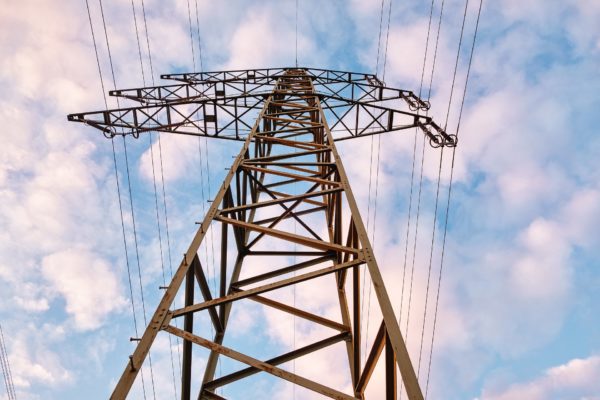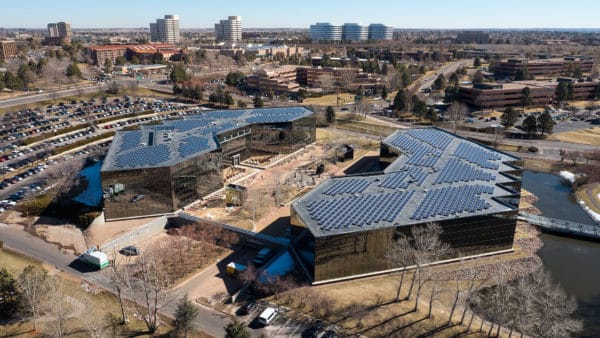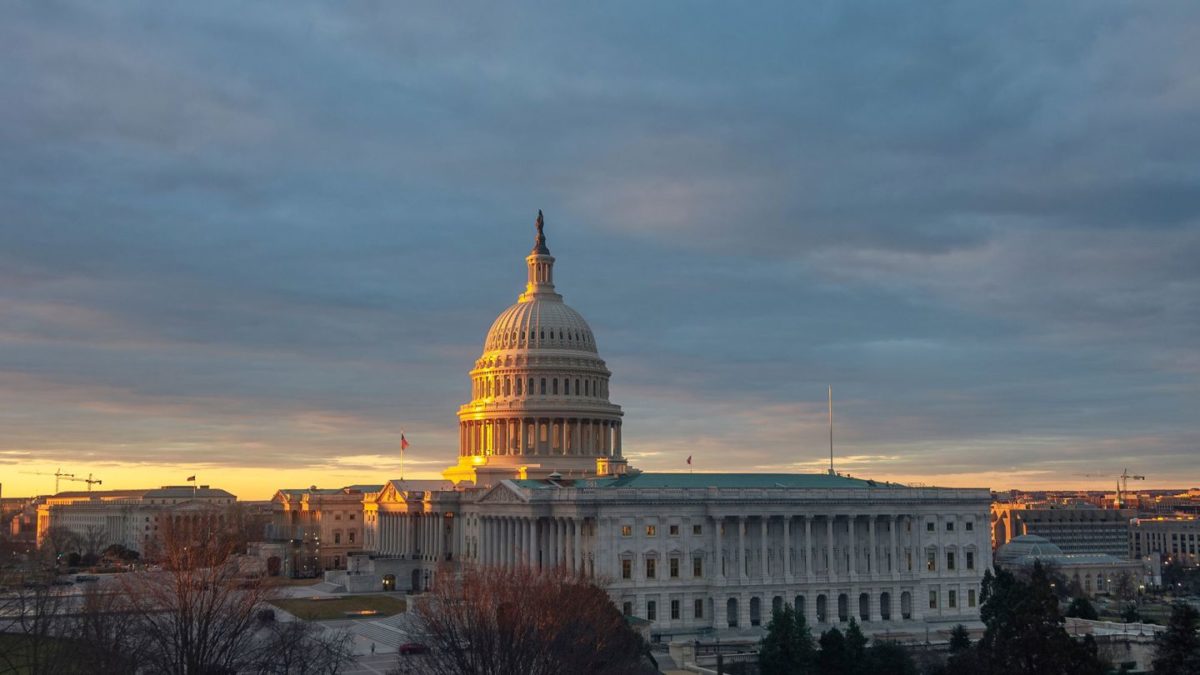When we began in 2008, if somebody suggested at a conference that solar would repeatedly be the single largest source of new energy infrastructure in the United States, they would have received a polite smile – with the right audience. And yet here we are.
Solar outperforms natural gas and wind as the fastest growing, and one of the least expensive, new electricity-generating sources in the U.S. and around the world.

In the first half of 2021, solar photovoltaics (PV) accounted for 56% of all new electricity-generating capacity additions in the U.S., adding nearly 11 GWdc of capacity. This is a 45% year over year increase and the largest Q2 on record. This year is on track to become the biggest year ever for new solar capacity additions in the U.S.
Right now, a new project is installed every 84 seconds in this country by over 10,000 solar businesses employing over 250,000 workers.
This growth is being led in large part by utilities, municipalities, and corporations. Bloomberg New Energy Finance estimates that the 285 corporations in the RE100 could drive as much as 93 GW (around $100 billion) of incremental new wind and solar projects by 2030.
The challenge
Our challenge is our scale. Increasing global demand for renewable energy and the continued electrification of the U.S. power and automobile sectors only adds to already significant supply chain issues for everything from modules, to inverters, to batteries.

Image: Max Pixel
Freight costs have increased by nearly 1,000% at the Port of Los Angeles, and across ports in the United States. An unprecedented expansion of development assets within ERCOT, PJM, NEPOOL and MISO has created 5+ year interconnection delays, sometimes longer, with limited system-wide planning or cost-sharing for these upgrades.
Many current policies focus on optimizing the economic outcome of owning assets through a stand-alone federal investment tax credit (ITC) for batteries, an extension of the ITC for solar, or a direct pay option.
(Read “White House announces framework for its Build Back Better agenda.“)
We support these incentives, but they enable projects at or near commercialization at the “top of the pyramid” of our industry. This has worked historically to pull earlier stage projects through, but it will not work if we are to scale as needed.
About 2% of current domestic electricity generation is produced from solar. Our goal is 40% or more by 2035. In the next decade we will need to quadruple or quintuple our annual development of solar energy assets. A more cogent long-term policy approach must also focus on the development assets that will be the seeds of this future.
To plant these seeds effectively, the industry needs more transparency in cost projections, more confidence in equipment procurement, a more stable and transparent view on interconnection, basis and congestion, and a significant voice in helping utilities shape their long-term planning and investments.
 In order to address these needs, federal policy must address equipment availability, solar development pathway risk and timing, as well as transmission and distribution interconnection. This will enable our industry and investors to appropriately allocate risk capital among a much larger number of assets.
In order to address these needs, federal policy must address equipment availability, solar development pathway risk and timing, as well as transmission and distribution interconnection. This will enable our industry and investors to appropriately allocate risk capital among a much larger number of assets.
Solar development needs to be less binary and faster to drive a vastly larger and broader base of assets at the “bottom of the pyramid” of the industry.
Where federal policy succeeds – and falls short
In our 2021 Annual Letter, we highlighted three bipartisan priorities that are instrumental to meeting U.S. decarbonization goals: (1) immediately reduce solar import tariffs (and find other ways to incentivize long-term American made manufacturing); (2) invest in aging transmission and distribution infrastructure in concert with utilities and RTOs; and (3) implement a national renewable energy portfolio standard (RPS) or clean energy standard (CES).
Remove Solar Import Tariffs That Threaten the Pace of Deployment. Solar import tariffs dramatically limit the growth of the U.S. solar and renewable energy industry, putting the U.S. at a global disadvantage and calling into question our ability to meet the goals set under the Paris Climate Accord.
We estimate that 201 tariffs alone add at least $.05/watt to the engineering, procurement, and construction (EPC) projections for each project, with a limited (if any) increase in domestic manufacturing. The tariffs also create massive uncertainty and compound preexisting supply chain issues.

Image: Pixabay
We can, and should, incentivize domestic production through incentives such as production tax credits, not tariffs. We must ensure the availability of supply side materials even when they’re from China and pursue parallel focus on forced labor and other human rights violations.
Tailored regional trade solutions targeted at specific bad actors paired with SEIA’s leading traceability protocol is a good starting point and one the solar industry pioneered. The volatility of tariffs is dramatically increasing costs for our industry and impairing the ability of our industry to plan for and scale our future.
This is not a priority of the Biden Administration, but it should be. Climate change is repeatedly the most important issue for Democratic voters, solar energy is the most important tool we have to combat climate change, tariffs are the single largest issue the industry faces, and removing the tariffs requires no Congressional approval or action. We need to remove them.
Support Aging Infrastructure Upgrades. One of the biggest hurdles to scaling renewable energy is the existence of old and aging electricity transmission and distribution infrastructure. This is a well-publicized problem, made even more evident by recent grid failures in California and Texas. The Bipartisan Infrastructure Framework and the budget reconciliation package offer the first comprehensive opportunity to build the 21st century grid.

Image: Unico Properties
The solar ITC has led to a period of remarkable industry growth since 2008. The infrastructure and reconciliation packages could do the same for transmission and distribution. In addition to economic incentives, the packages would tackle some of the issues with regional and interregional transmission necessary to successfully grow clean energy.
For example, the infrastructure package includes $9 billion to assist states with siting transmission projects and to support the U.S. Department of Energy’s (DOE’s) transmission planning and modeling capabilities.
It also includes financial support for constructing and modernizing grid infrastructure across the seams between the Eastern and Western Interconnections, the domestic interties with ERCOT, and for offshore wind projects.
Further, it directs DOE to study capacity constraints and congestion when designating National Interest Electric Transmission Corridors, with the intention of spurring a nationwide version of Texas’s successful Competitive Renewable Energy Zones (CREZ). This is exactly the work that must be done and the Administration’s leadership here is commendable.
Pass Congressional Solutions to Expand Renewable Energy. With the release of the Administration’s new budget framework, Congress will not likely pass a Renewable Portfolio Standard, a Clean Energy Standard, or even the proposed Clean Electricity Performance Program (CEPP) as part of federal budget reconciliation.

Wikimedia Commons
But there are other policy instruments under consideration that, although imperfect, will help to drive a more sustainable future.
Congress is expected to vote on a budget reconciliation package intended to supercharge the expansion of solar and other renewable energy projects by, among other things, extending the solar investment tax credit (ITC) by 10 years at 30%, adding a new 30% storage ITC, and adding an additional 10% bonus ITC for solar projects that demonstrate concrete benefit to a low to moderate income (LMI) or environmental justice community. These provisions are in additional to the separate bipartisan infrastructure bill.
We expect the final package will require companies to pay prevailing wage for all new projects and possibly to demonstrate the domestic content of projects, incentivizing those with higher a share of American-made components, in addition to directly incentivizing the growth of domestic manufacturing. The entire reconciliation package is expected to create hundreds of thousands of new jobs in manufacturing, construction, and service industries nationwide. Based on our internal analysis, we believe that the 30% ITC would effectively fund the prevailing wage requirements.
Fundamental change
We are on the precipice of groundbreaking federal clean energy policy that will fundamentally change the landscape for renewables, and specifically solar. The current infrastructure package and reconciliation bill offer a powerful and promising catalyst for the redesign and rebuilding of our national energy infrastructure and transportation grid.
This country is still missing a clear roadmap for hitting our climate goals, and a market-based framework like a RPS to implement them. And we must act quickly to modernize our grid through a collaborative effort with regional transmission organizations, FERC, utilities, and industry. But we’re well on our way to creating the energy future so many of us have been working on.
Yuri Horwitz is CEO of Washington, D.C.-based Sol Systems.
The views and opinions expressed in this article are the author’s own, and do not necessarily reflect those held by pv magazine.
This content is protected by copyright and may not be reused. If you want to cooperate with us and would like to reuse some of our content, please contact: editors@pv-magazine.com.








Thank you for the post. I was aware of all these problems. There are others I can and will add, but let me comment on the ones mentioned.
I understand the constraints on supply, the difficulties with tariffs, and the power of zero Carbon energy, particularly solar, as a means of expanding employment. However, I see little economic that can get in the way of solar or wind and storage which incentives can help. Solar and wind will be the energy supply of choice on sheer economics by 2030 if they are not already. While post-pandemic supply issues are affecting everyone, the sudden surge in demand for solar and wind solutions certainly exacerbates that. But it is a nice problem to have. I’m sure the solar and wind industries will solve these.
But there are other, more social obstacles which wind and solar need to overcome. Whether these were problems that were seeded by vested energy interests through clever PR or whether these are organic, right now, particularly in area which have ample open space to host wind and solar, these energy sources are considered aesthetically unacceptable. That’s silly of course, and it’s downright injust and unethical considering that these area, often suburbs, use lots of electricity, will use more once they get EVs, and yet they expect natural gas plants sited near and sometimes in low income communities and communities of color to provide the electricity they need. They also are conveniently situated away from major pipelines bringing fuels, and away from compressor stations and the like.
But nevertheless it is a big problem. It will eventually be overcome, when the economic argument is compelling enough — and it will be — but in the meantime it is blocking things like community solar which bring many benefits to people of all income grades and people having all kinds of residences.
There is also opposition to agrivoltaics for reasons I do not entirely understand. Here farmers can get income streams from dual use of their properties, something which farmers, for example, in upstate New York have been doing a long time with wind turbines and natural gas wells. But the opposition to solar and, admittedly, recent more ferocious opposition to turbines, is new and somehow different, and that needs to be solved.
The solar industry needs to remake itself in a way which puts a more human face on it. Whether that is by doing better PR or whether that is by having more employment oriented focus — having solar and turbine components built in local areas rather than in Asia. Agrivoltaics should be an easy sell, but it isn’t. If there are vested interests funding opposition , as they certainly did to nearshore wind turbines, SEIA and others need to root that out and expose them. They could find many allies. This human face needs to make it difficult for them to be painted as “another face of big energy who only cares about profits.” That’s not true, of course. Solar and wind and storage are revolutionary technologies, and no one knows the great benefits they’ll provide. But the degree to which solar moratoria and anti-solar-on-farm campaigns are succeeding suggests SEIA isn’t providing for a key part of their mission.
There is no way a federal mandate is going to soothe over these problems.
As I said, I am sure the long term future of solar, wind, and storage are bright. The projections say that the capital cost of building wind+solar+storage in the 2030s per kWh will be one sixth of the cost of transmission of grid electricity also per kWh. Accordingly, no manufacturer, subdivision developer, or home owner will want to buy electricity from the grid unless they absolutely have to do so. That will change whole communities, whole towns, whole cities, and land use policy. But in the interim it would be nice to think these good people in these communities could engage with solar, if only to nudge its implementation in ways more acceptable. I fear that if they oppose it outright and develop a history of doing that, when the unopposable force arrives, all their interests and preferences will get bulldozed by massive economic advantage, and I’m sure that wave will arrive with coarse effects. That is unfortunate, but inevitable.
It’s up to SEIA and the rest of us to provide the arguments and the vision of how solar, wind, storage are all in everyone’s best interests, as we know they are.